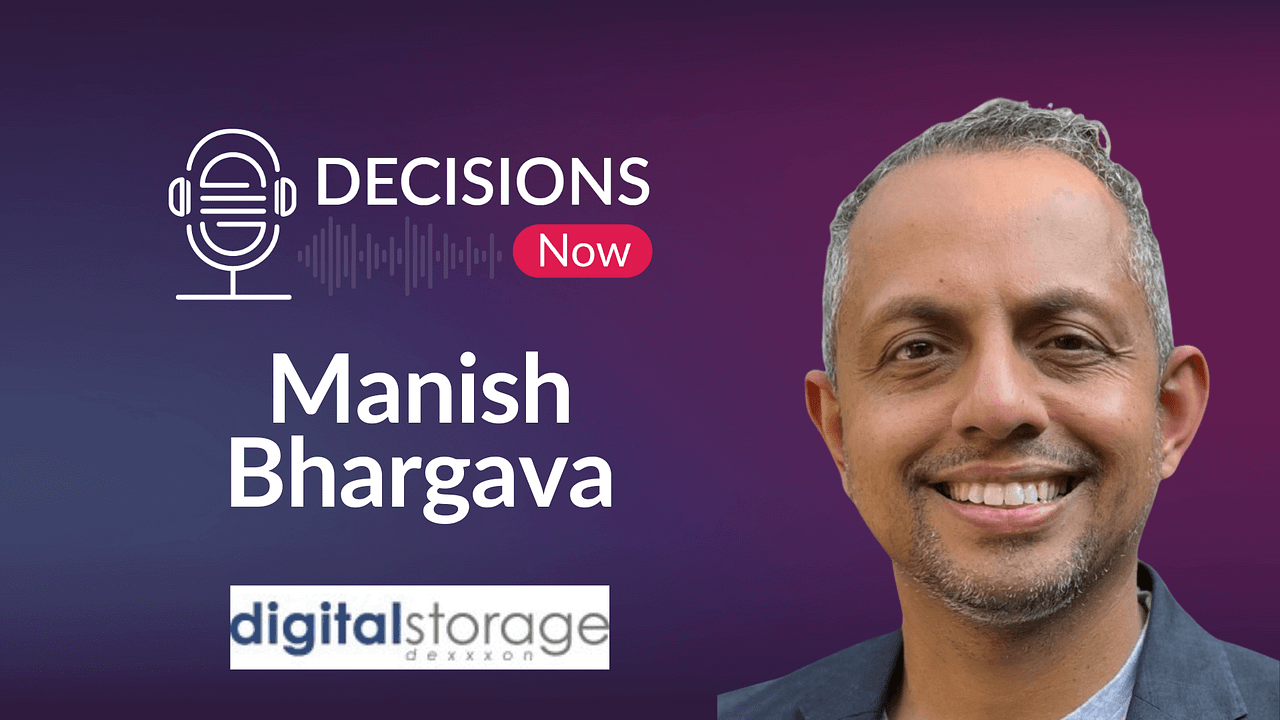Data analytics and AI have been at the forefront of the conversation for industry leaders for many years. In the fifth episode of the Decisions Now podcast, we talked with data scientist and AI-expert Briana Brownell, the founder, and CEO of Pure Strategy about how to boost your analytics maturity.
In their conversation, co-hosts Rigvinath Chevala, EVS chief technology officer, and Erin Pearson, vice president of marketing, chat with Brownell about how by tapping into the potential of AI and data, companies can pave their path to success by enhancing the analytics maturity of their organization.
Subscribe to the Decisions Now podcast today, you can find us on Spotify, Apple Podcasts, and Amazon Music among other platforms.
Where do we stand on the AI and Data Analytics Journey?
“The word data was most popular in 1984,” Brownell said. “I find that so fascinating because, you know, we’ve had data, we’ve thought about data for decades, but now we’re starting to think about it in a much more sophisticated way and use it and implement things in all areas of industry, in all areas of organizations. So, this is a problem or challenge that we’ve been tackling for a long time.”
The obvious challenge here for years has been strategically implementing this available data into actionable insights to help organizations become more mature on their analytics journey.
A 2021 survey by NewVantage Partners states that 99% of firms report actively investing in AI and Big Data, but only 24.2% have forged a data culture, and only 29.2% of them are experiencing transformation business outcomes.
“There are industries that are sort of ahead of the curve at the moment, but there are a lot of industries that are actually lagging a little bit,” Brownell said. “So, areas where most of the analytics are really just starting to bubble up in the organization, they’re far from that predictive and prescriptive sort of maturity in their analytics area.”
A study she read mentioned around 50% of organizations were still in the beginning stages of their analytics maturity journey, Pearson said.
“Aerospace and elevator companies are more on the matured aspect of their analytics journey compared to retail and consumer packed goods (CPG) companies,” Chevala added in response to Pearson. “They’re still figuring out how to get to that prescriptive analytics journey but at least they’ve started so it’s probably 40 percent sounds right, you know?”
Moving Up the Analytics Maturity Curve
Evolving through your analytics maturity is a complex journey that requires time and resources. In this episode, we discussed three steps to get you started:
1. Building a Strong Innovation Team
Brownell mentions that in successful mature organizations, she often sees them putting together an internal innovation team. The purpose of this team focuses on building skills and educating the other groups throughout the organization on how analytics can help different departments in the organization.
“They would be the one that would sort of, you know, evangelize some of the possibilities that the different groups could employ,” she added.
She believes creating one internal group proves more successful in comparison to hiring data scientists for each department, which is often not attainable due to budgets and it being harder to assimilate data scientists into each of those groups.
2. Unified and Non-Siloed Data
“It makes sense to use this innovation team as the central unit that feeds data to everyone in the company because part of the problem that people have when they’re getting started in this journey is that their analytics are all over the place,” Pearson added. “So, part of it is you want it to come into one central view because you also want people to be making decisions off the same data set.”
Having a central data set that all teams use when making decisions is essential to an organization’s maturity growth.
“Now the challenge with that is you have a procurement team on one side, a marketing team on another, they want different data as they make different decisions, how do you actually put together a system where you can use cohesive data to drive toward the company’s end goal?” Pearson asked.
Different teams in a company use different types of data, for marketing may be audience analytics heavy in comparison to finance that maybe crunching data to forecast outcomes, Brownell said.
“Then to have that kind of united non-siloed sort of single version of the truth or single source of the truth, if you can create that within the organization, then everything can flow from that,” she said. “But that first push to really unite all of those groups can be challenging.”
When it comes to larger organizations, it’s essential to integrate data sources of mergers and acquisitions between companies into the central data hub.
“We see these solutions, they’ve really been hybridized and morphed throughout the years, and it is very difficult to sort of create that as a sort of singular place, but it becomes so, so, so important,” Brownell said. “It’s a lot of work to get there, but once you have it, it can be magical.”
Chevala mentioned the success of an Evalueserve client that began the analytics journey almost two and a half years ago, and while it took them a while to get to a steady state, they were able to put in a place a super centralized analytics vision where all departments had visibility into this vision and pipeline with a consistent leader for the group. In this case, Evalueserve helped the client with their analytics maturity using our AI-powered tool, Use Case Hub.
3. Asking the Questions
It’s essential to identify the right data that’s needed, making sure it’s uniform before building your analytics model, Chevala said.
“It all starts with people asking good questions in the organization,” Brownell mentioned. “Understanding where the potential use cases are, how products can be improved, how different markets can be entered, different kinds of efficiencies that might be able to be taken given some advanced analytical projects.”
Before getting started, companies must ensure people at all levels in the organization are asking questions on how to improve their contribution to the larger group.
“You can’t find an answer without a good question,” Brownell said. “And so, you know, focusing on trying to find those good questions, I think is key.”
For more advice from AI experts Briana Brownell and Rigvinath Chevala on kick-starting your analytics maturity journey, AI, and data analytics, listen to the full episode by subscribing to the Decisions Now podcast today!



